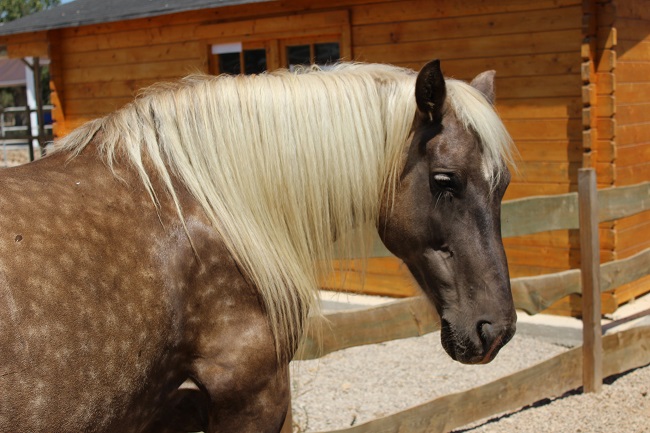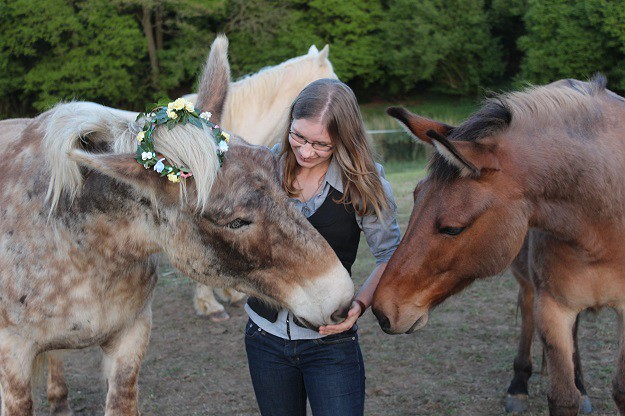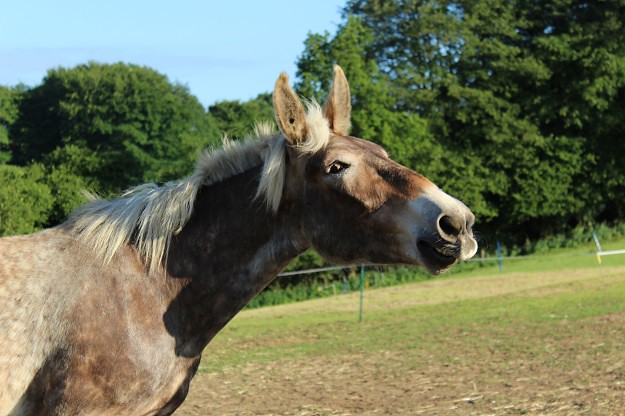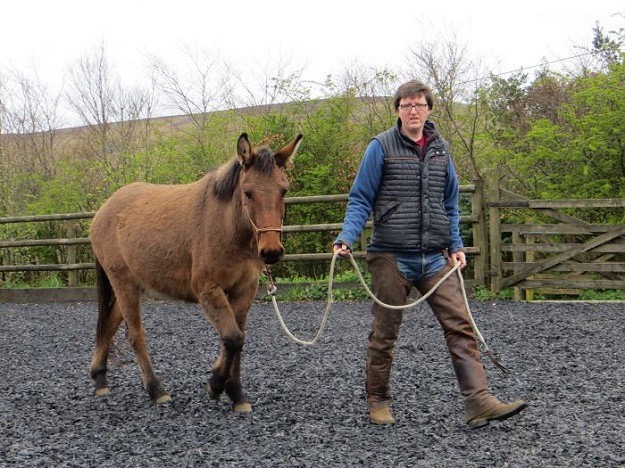The second half of the questions sent in via Facebook! You can read the first half here.
6. How does caring for a mule differ to horses and donkeys?
I’ll have to answer this as a mules vs. horses question, because unfortunately I don’t have any firsthand experience caring for donkeys. I would definitely like to have my own total ass to go with my half-asses one day, though!
Generally, mule care doesn’t differ that much from horses. There are a few things to be aware of, however:
- Feed/pasture: I treat my mules as though they’re laminitic, as sugar affects them more than horses. Prevention is better than cure!
- Pain: on the one hand, mules are quite stoic and therefore not as likely to show pain from illness and injury; on the other hand, woe betide you if you try riding them with ill-fitting tack or ever accidentally pluck out a single belly hair while trimming their hooves … oh wait, maybe that’s just Marty.
- Feet: mule feet differ between mules (for example, Marty’s hooves are very small and upright, whereas Xato’s are a little more horse-like) but they should all be trimmed as mule feet. I would absolutely recommend finding a farrier with donkey experience, or you can check this list for farriers/EPs with mule know-how.
- Tack: some mules are blessed with whithers, but most are not. They are also wedge-shaped, i.e. narrower at the front, so it can be quite tricky fitting a saddle to them. There are mule-specific saddles available but it’s very hard to get hold of them in the UK! So shop around and find what style suits your mule best. Many people ride mules with a breastplate and britching/crupper even with correctly fitted saddles.
- Fencing: mules are excellent escape artists; I’ve heard several stories of mules who would jump/climb out of their paddock, go off on a wander, and then climb/jump back in before their owner returned. This would go on for months before they were discovered. Electric fence seems to be the most highly-rated, and miraculously both of mine stay behind a single strand of chest-height tape (…as far as I know). Marty will jump out if left alone with Xato, however.
- Temperament: mules are very smart, so they get bored easily; they need lots of stimulation by providing work, playmates, and field enrichment.
Basically, caring for a mule is a lot like training a mule: we must care for / train a mule the way a horse ought to be cared for / trained.
Footage from that one time when the field was cursed. Marty’s attempts to bring Cash Pony to “safety” were pretty fascinating – not caught on video, unfortunately, but described in the linked post.
7. What does Xatos’ mother look like?
Like this! Her name is Jeca (pronounced Hecca). She now lives at a riding school for the disabled and is wonderful at her job.

8. What are their pageboys outfits like?
I so wanted to turn up at my wedding on muleback! When Xato first arrived, I had daydreams of doing his mane up in flowers and riding down the aisle on my noble golden destrier … unfortunately, that dream began to die when Marty pulled Xato’s beautiful mane out, and was further damaged by the realisation that Xato wasn’t quite ready for the task. Further complications of transport, weather and costs involved ruled the whole thing out in the end. Ah well! We have several more years of playing dress-up ahead of us. 😉

9. How do you pronounce Xato’s name?
Like “Chatto”, but with a bit of an emphasis on the “a” and the “o”. Sometimes I also pronounce it as Chattanooga, Chattington, Chats, Chattyman, Champ, Big Mootle, and Lord Chunky.

10. How did you acquire Marty?
Basically, Ben looked up from his computer one evening and said: “Do you want a mule?” I said yes and then realised he was serious.
Marty (or Martin, as he was then) belonged to Tom Widdecombe, a teacher of Ben’s who was looking to downsize his herd. Marty was well-loved but hadn’t had the time Tom felt he needed. We were approved as potential owners, and an agreement was made to go down to Devon in two weeks time and, providing that we could load him, Marty would be ours. We crammed on Brad Cameron DVDs during that fortnight, and then spent two days working with Marty. We taught him to load by the second day but the journey home was a nightmare – Marty is the reason I will never, ever travel an equine in one of those lorries with the half-size partitions ever again. He got stuck trying to jump over and I had to physically lift him by his forelegs to put him back. I ended up travelling in the back with him, singing to him for five hours solid, which is terribly illegal (the travelling, not my singing) but it did mean we got him home in one piece…
Really, I should have seen then and there how life with Marty was going to be. 😛
(Fun Fact: we later discovered that Marty was actually born FIVE MILES from where we live now! He then travelled 200 miles down to Devon before coming back again four years later. Small world)

